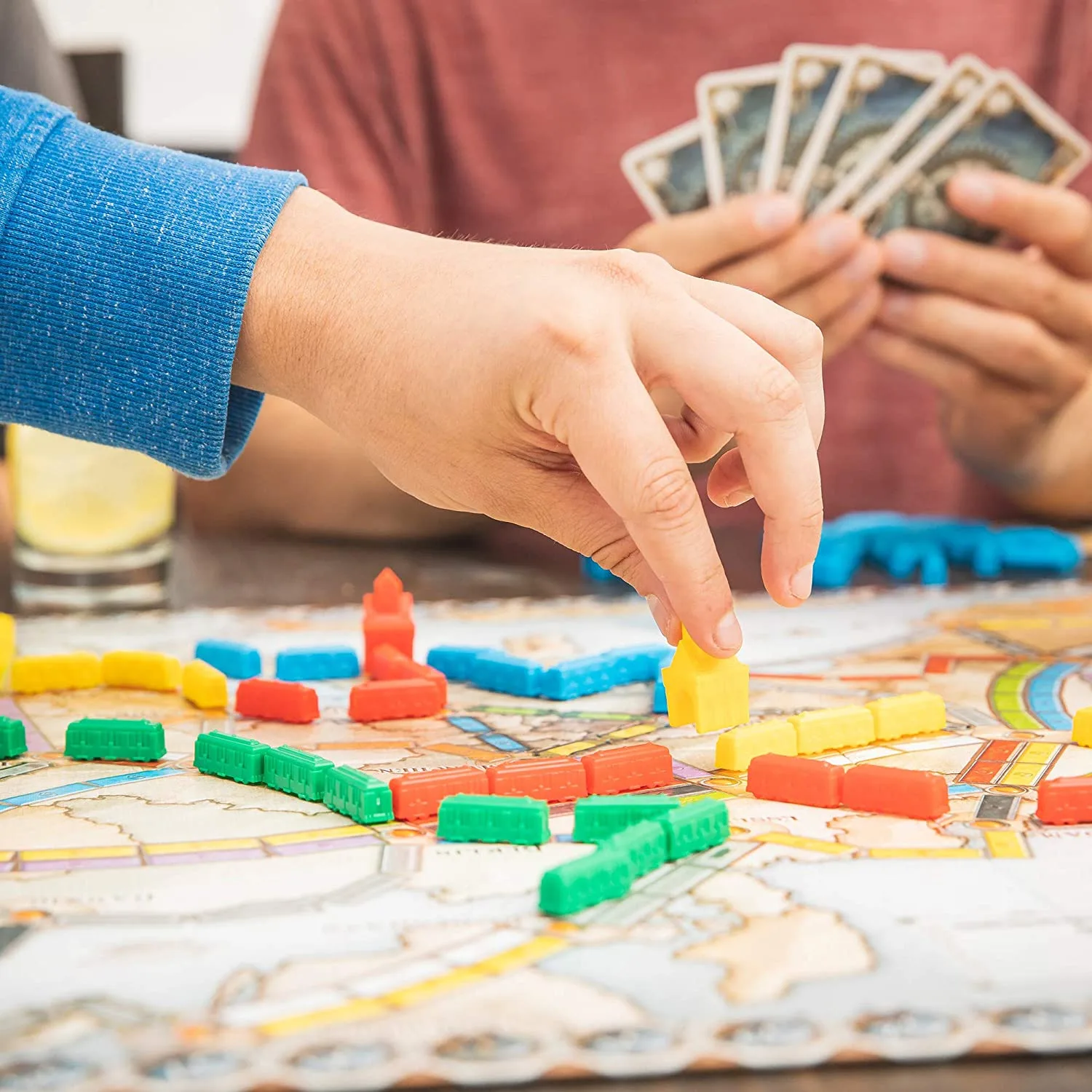Description
In its simplest form, in Ticket to Ride: Europe you will be trying to connect 2 cities (aka routes) with trains in order to score points. Longer routes equals more points.
Special Routes in Ticket to Ride: Europe
As mentioned, there are a few routes that act different than the rest.
1. Grey Routes. On these, you can use any color of train car cards you want, provided they are all the same color.
2. Ferries. These routes need at least 1 locomotive, if not more, in order to complete.
3. Underground routes. You complete this route as you would with a Grey Route, however, you must then flip 3 train car cards from the supply deck. If 1 or more of these cards (including locomotives) is the same as the color you chose, you must produce another train car card to replace it or you don?t get the route! Yes, you might have to replace up to 3 cards.
4. Train stations. You can place 1 of your 3 train stations in an unoccupied city in order to use another person?s route. This is especially handy/essential when you can?t connect the two cities you need in order to complete your route card!
Ticket to Ride Europe is very similar to the original game, with a few added elements. So, if you know how to play the original, picking up on this one will be a breeze.
If you haven?t played any games in the series, first off we are envious of the joy you are about to have the first time playing. Secondly, it is a very simple game you will pick up in no time.
As always, we are going to condense this How to Play Ticket to Ride into its most basic form. This will allow new players or prospective buyers the ability to understand the game in about 5 minutes. Remember though, this guide to play is not inclusive of all the rules.
Set Up of Ticket to Ride: Europe
After laying out the game board, each player will be dealt 4 route cards (1 long one, 3 smaller ones), as well as 3 train cards. And, of course their trains and train stations!
Players will choose at least of the 2 route cards and return any unwanted ones, keeping all routes a secret.
In the center, you will flip 5 train cards face up, with the remaining face down in a draw pile beside.
As you will see on the game board (pictured below), the color and amount of train cards needed to connect 2 cities varies throughout the board.
Game Play of Ticket to Ride: Europe
On each person?s turn, they are allowed to perform 1 of 4 actions.
Pick up train car cards.
Here they have the choice to choose 2 face up train cards of their choosing (Note: only 1 if they choose a locomotive/wild card) or 2 face down cards or 1 face up and 1 face down card (again, excluding face up locomotives).
Note: If it wasn?t obvious, you are trying to pick up the colors you will need for your routes, with locomotives being considered ?wild cards?.
2. Play your train car cards to claim a route.
You will need the same amount of cards as there is spaces between cities. See below for variations on trains needed.
3. Pick up route cards.
Here you will pick up 3 route cards and must keep 1.
4. Play a train station
These will cost you train car cards, 1, 2, 3 consecutively.
If any train car cards are picked up from the face up ones, they are replaced from the draw pile and the next person starts their turn.
How to Score Points in Ticket to Ride: Europe
There are 2 ways in which points are scored in the game, plus 1 bonus way at the end.
When you lay claim to a section between cities you will get Victory Points for the length of the section (see picture below).
You get points for completing your route cards. The amount is indicated on the card (see picture of route/destination card above). Be careful when picking route cards, as incomplete ones are worth their value in negative points!
Bonus Points
At the end of the game, the person with the longest continuous train will get an additional 10 points. Note here: You cannot use your train station to help lengthen your route.
You also get 4 bonus points per train station you still have in your supply.
End of the Game
The game ends when one player has 2 trains left in their supply. Each player gets one more turn, then total points are counted.











Reviews
There are no reviews yet.